
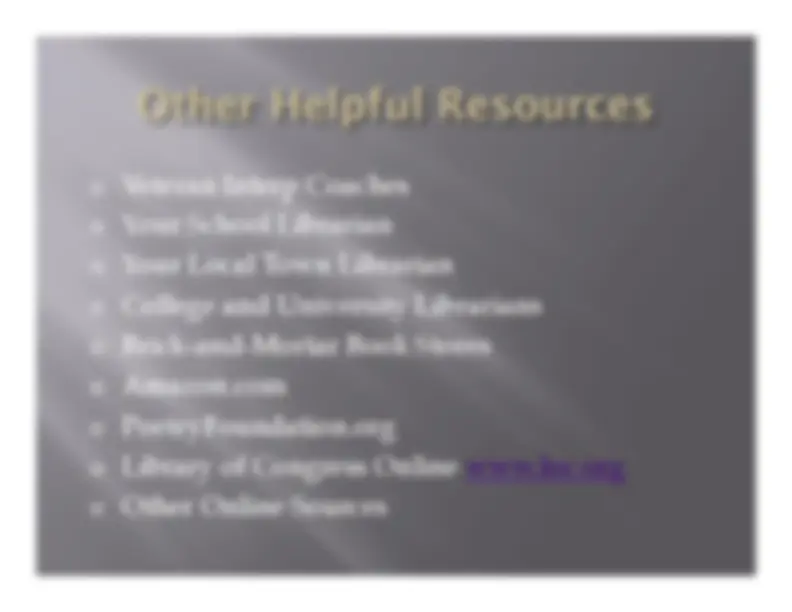
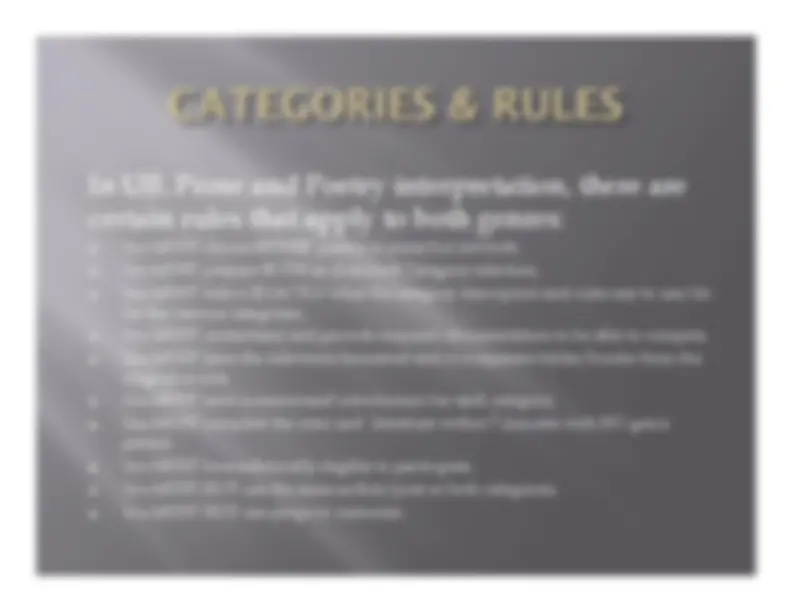
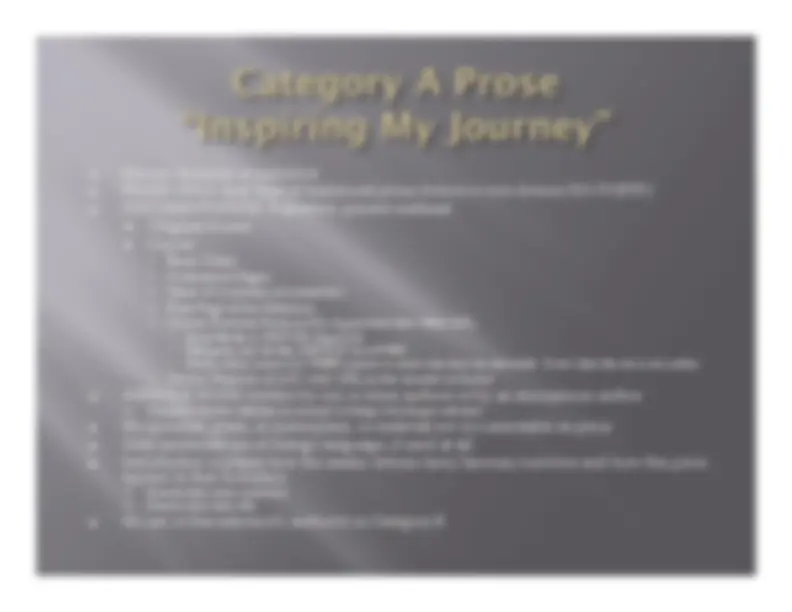
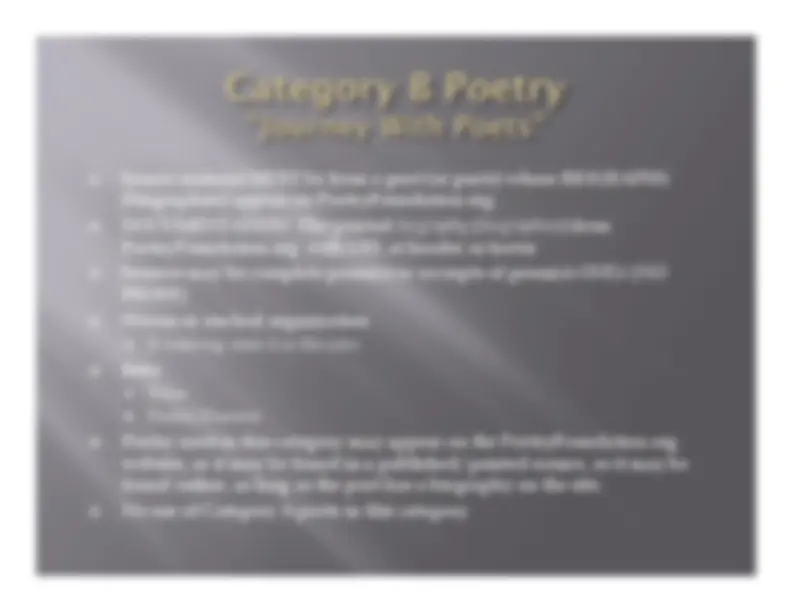
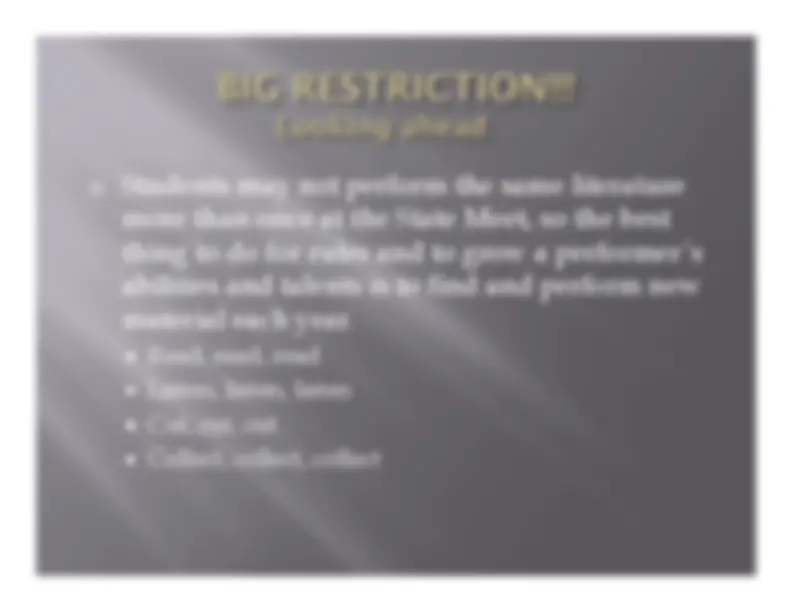
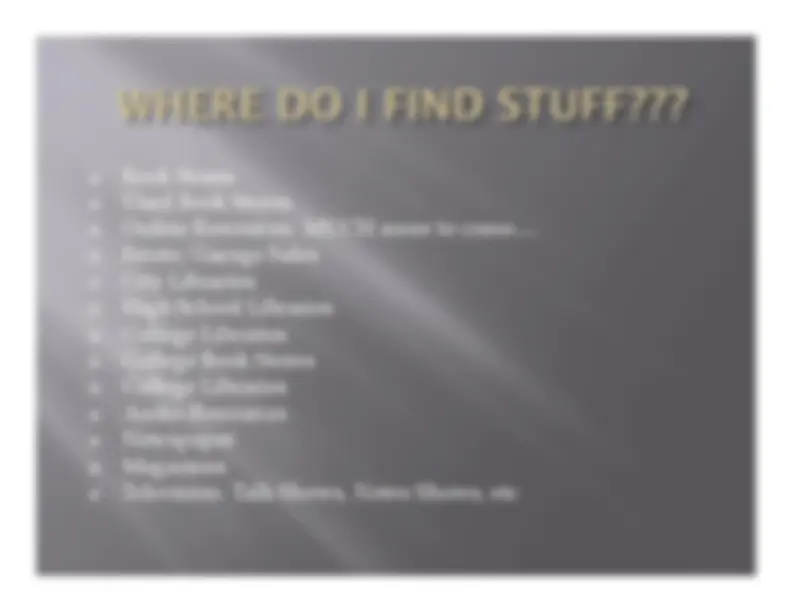
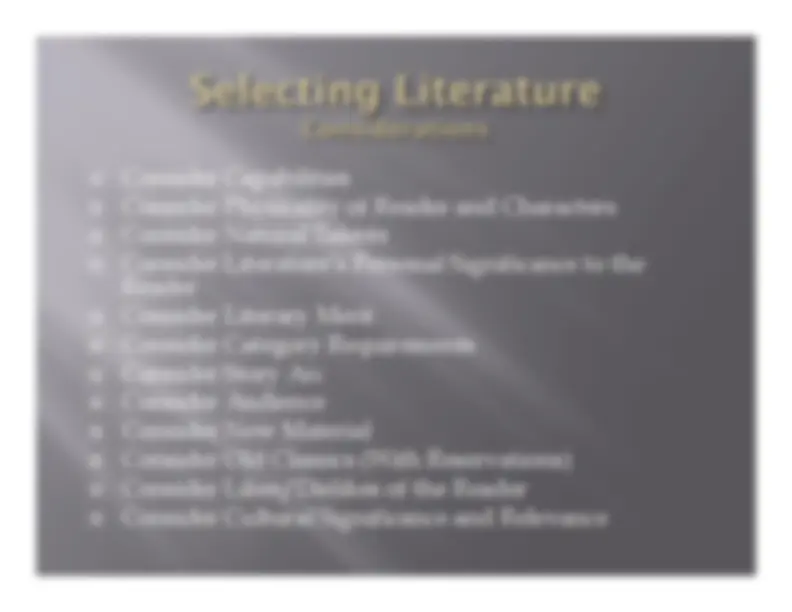
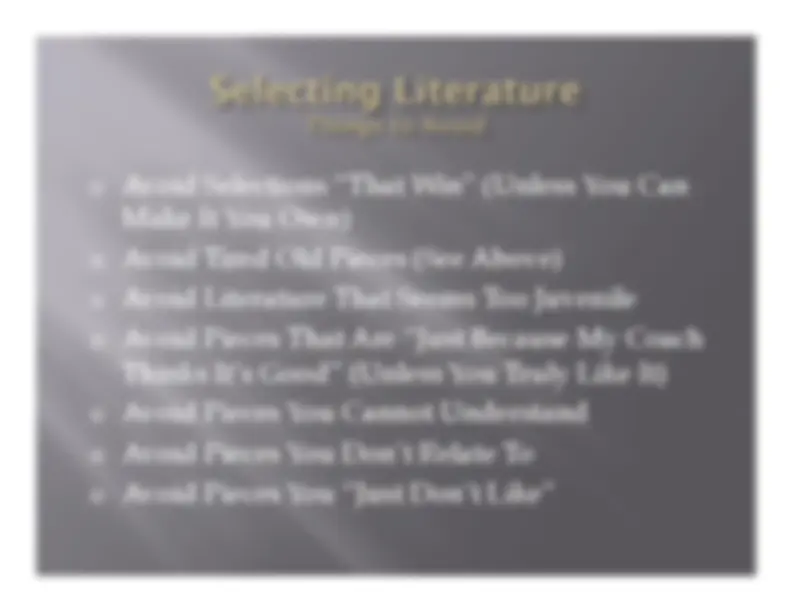
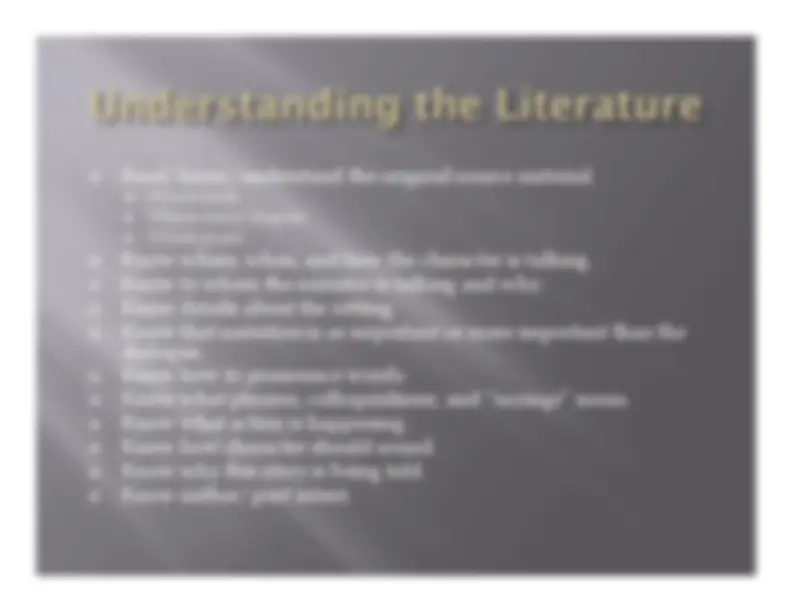
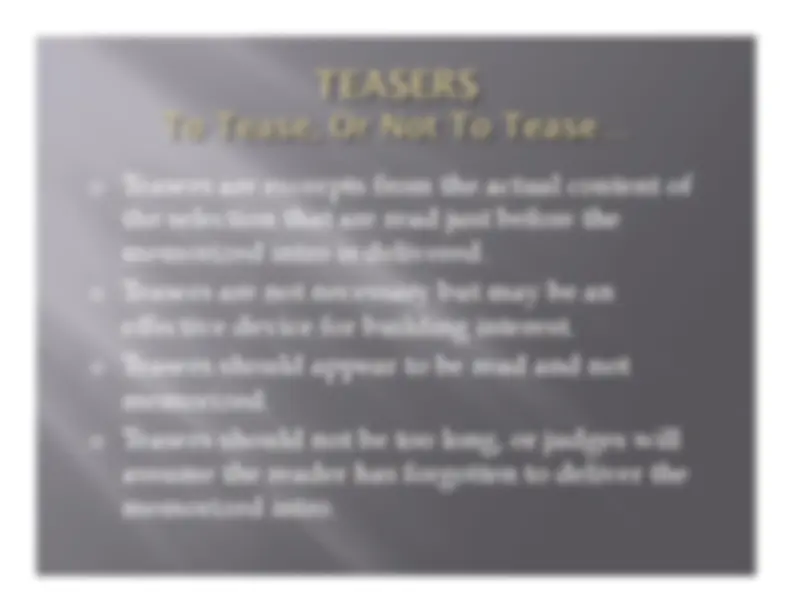
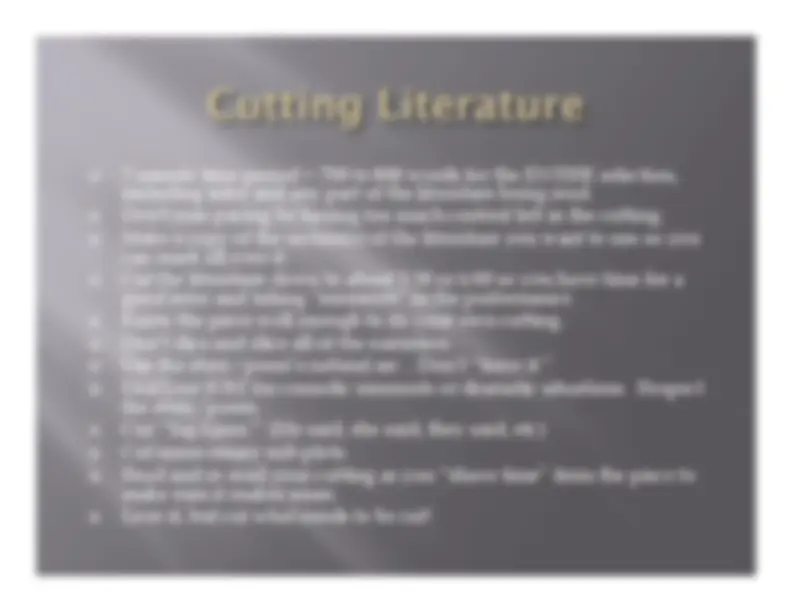
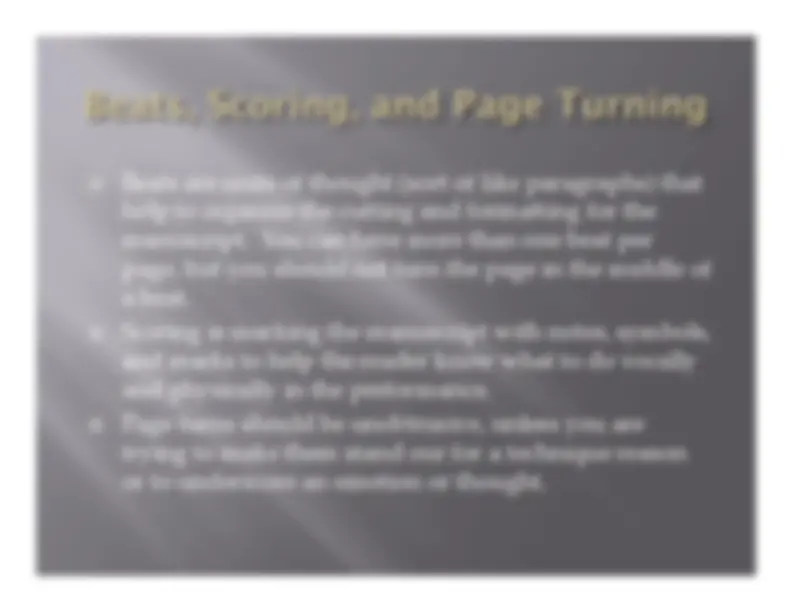
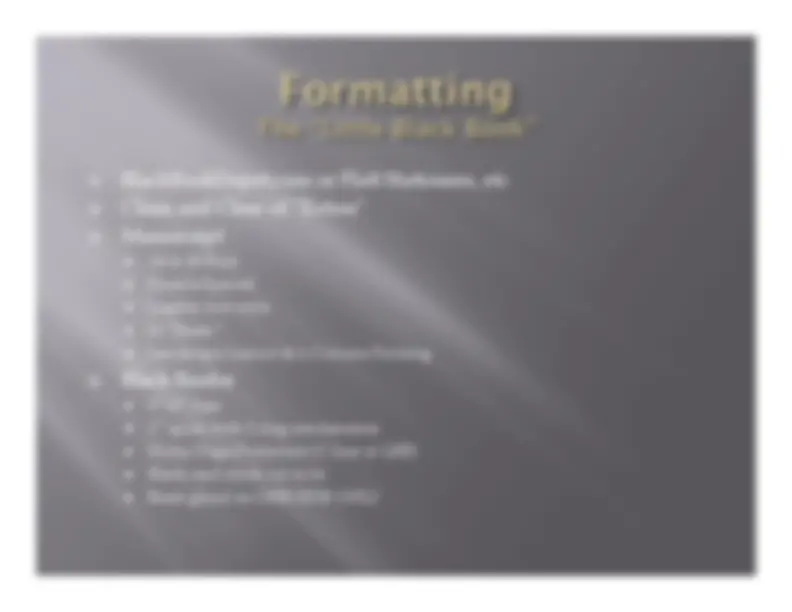
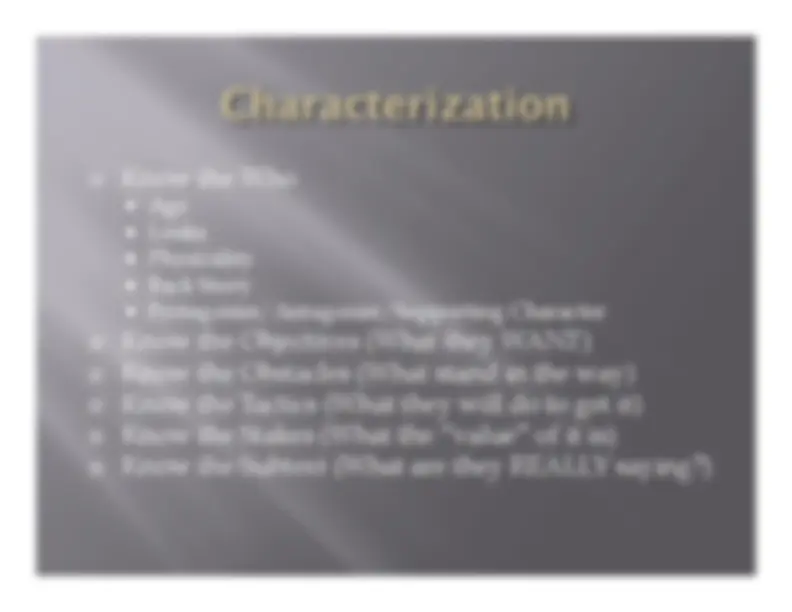
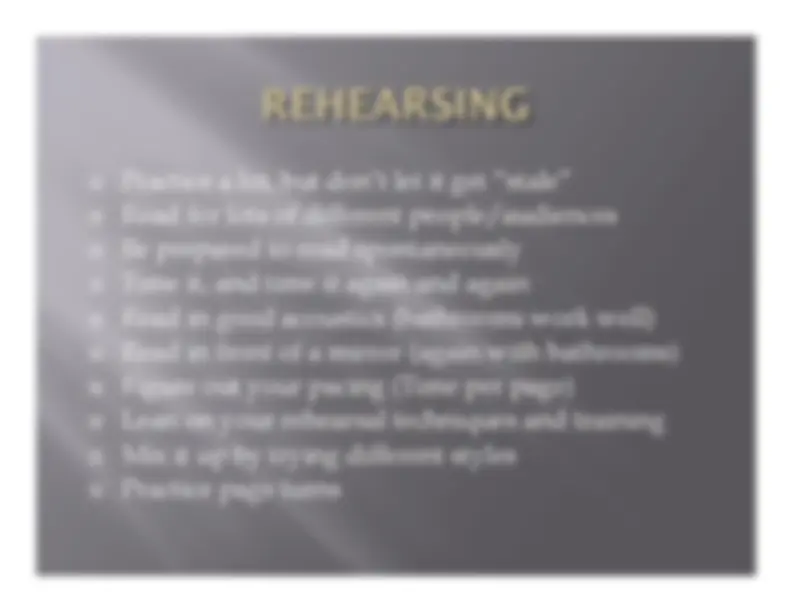
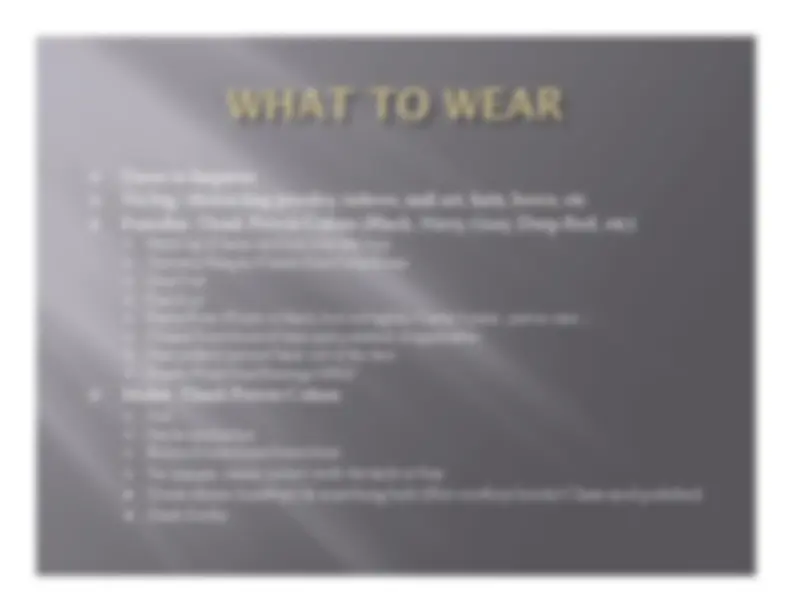
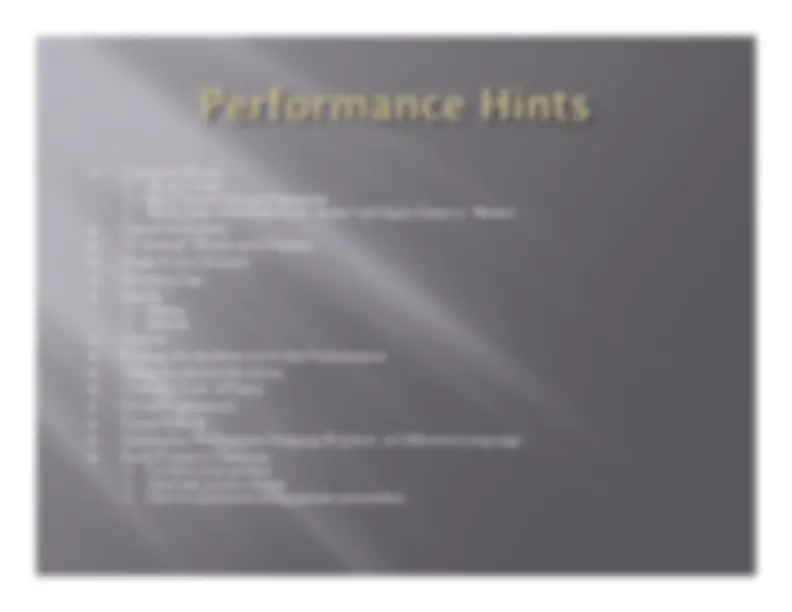

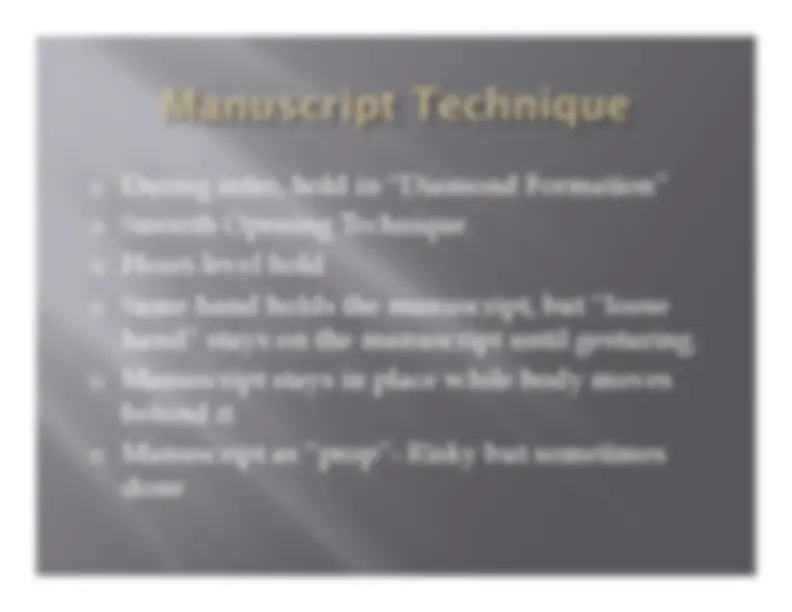
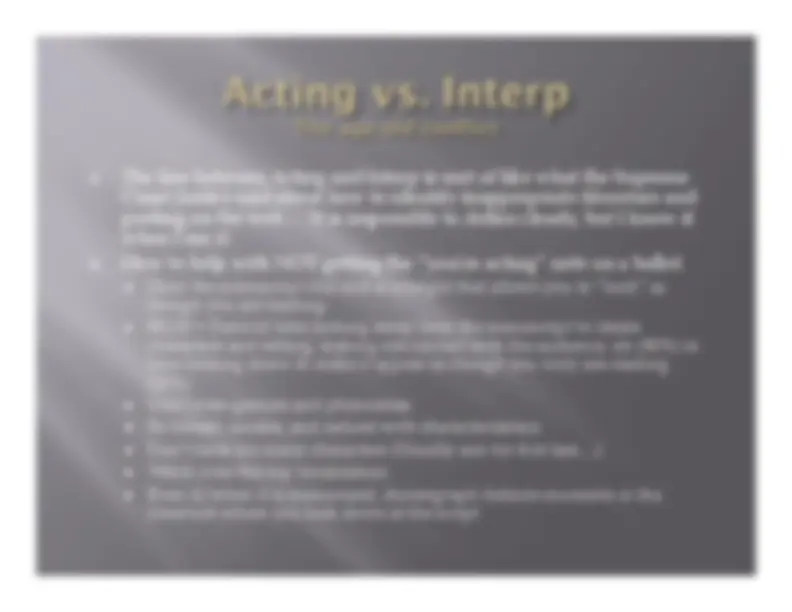
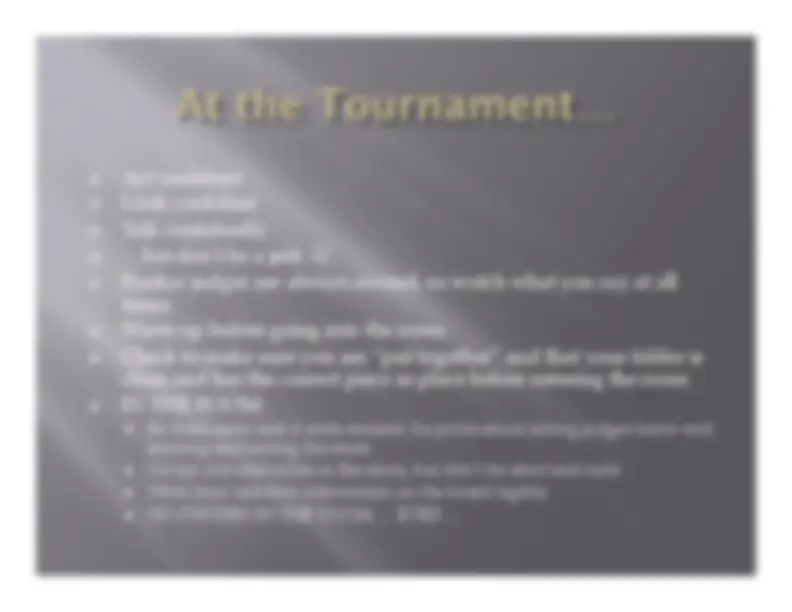
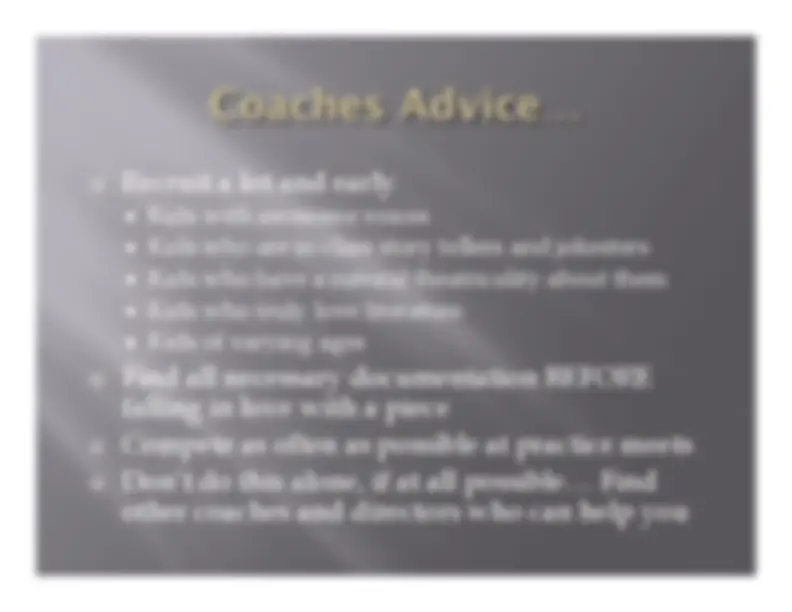
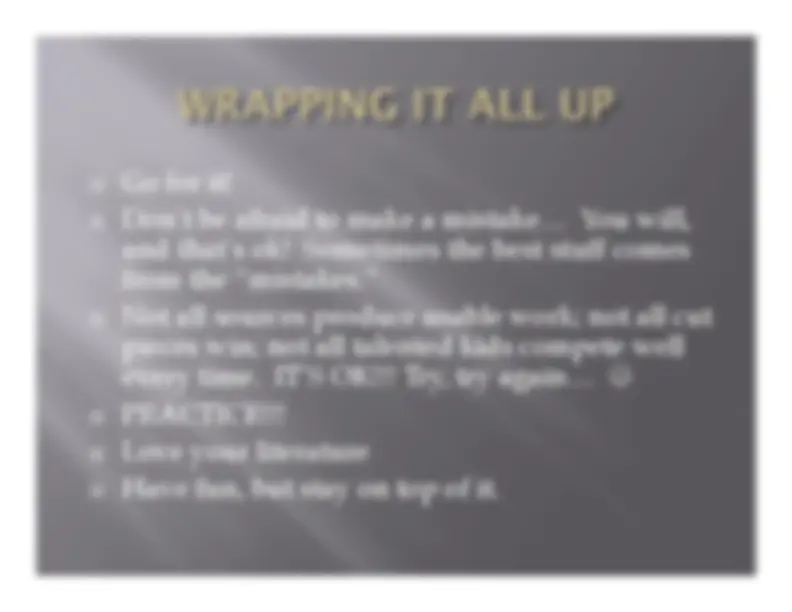


Study with the several resources on Docsity

Earn points by helping other students or get them with a premium plan


Prepare for your exams
Study with the several resources on Docsity

Earn points to download
Earn points by helping other students or get them with a premium plan
Community
Ask the community for help and clear up your study doubts
Discover the best universities in your country according to Docsity users
Free resources
Download our free guides on studying techniques, anxiety management strategies, and thesis advice from Docsity tutors
FOR THIS CATEGORY ONLY, “traditional “ prose can be defined as fiction, non-fiction, news, speeches, and essays, but students may use A SINGLE “nontraditional ...
Typology: Study notes
1 / 31

This page cannot be seen from the preview
Don't miss anything!
























Aimee Kasprzyk- Hillsboro High School kasprzyk@hillsboroisd.org
UIL Constitution and Contest Rules
UIL Prose & Poetry Handbook
UIL Speech Site Online
In UIL Prose and Poetry interpretation, there are certain rules that apply to both genres: You MUST choose EITHER poetry or prose but not both. You MUST prepare BOTH an A and a B Category selection. You MUST follow EXACTLY what the category descriptors and rules say to use/do for the various categories. You MUST understand and provide required documentation to be able to compete. You MUST have the selections formatted and in a separate folder/binder from the original source You MUST have a memorized introduction for each category. You MUST complete the intro and literature within 7 minutes with NO grace period. You MUST be academically eligible to participate. You MUST NOT use the same author/poet in both categories. You MUST NOT use props or costumes.
Heroes/heroines or survivors PROSE ONLY- Any type of traditional prose (fiction or non-fiction) NO POETRY DOCUMENTATION- Published, printed material Original Source Copies Book Cover Publication Pages Table of Contents (if available) First Page of the Selection Online Printout From a UIL-Approved Site With URL Social Media is NOT UIL-Approved Wikipedia and the like ARE NOT ALLOWED Check online sources for THEIR sources to make sure they are allowable. If not, then the site is not, either. Online Printout of LOC with URL in the header or footer A SINGLE WORK written by one or more authors or by an anonymous author Complete shorter selection or excerpts (cuttings) of a longer selection No speeches, plays, or screenplays, or material not documentable as prose Only incidental use of foreign language, if used at all Introduction explains how the reader defines hero/heroine/survivor and how this piece applies to that definition Introduction states author(s) Introduction state title No use of this selection’s author(s) in Category B
Thematic program examining a decade(s) and/or social or political movement through poetry (NO PROSE) Two or more poems or excerpts of two or more poems Two or more poets DOCUMENTATION- Published/printed in hardcopy *See Prose A for rules on what is/isn’t considered acceptable. They cross-apply. Self-published poetry easily available to the public is acceptable as well, but do your homework. Woven or stacked organization If weaving, state it in the intro Verbal or nonverbal transitions or both are acceptable Introduction MUST state the movement or time period. Intro states poets Intro states titles Song lyrics MAY ONLY be used as brief transitions, unless you can document that they have been published in hard copy and NOT explicitly as lyrics. Single, multiple, or anonymous poets are permissible No use of this selection’s poets in Category B
Source material MUST be from a poet (or poets) whose BIOGRAPHY (biographies) appear on PoetryFoundation.org. DOCUMENTATION- The printed biography ( biographies ) from PoetryFoundation.org with URL at header or footer Sources may be complete poem(s) or excerpts of poem(s) ONLY (NO PROSE) Woven or stacked organization If weaving, state it in the intro Intro Titles Poet(s) Name(s) Poetry used in this category may appear on the PoetryFoundation.org website, or it may be found in a published/printed source, or it may be found online, as long as the poet has a biography on the site. No use of Category A poets in this category.
Amazon.com has “You may also like”
Google Books Online Poetry Foundation Site and App Write Bloody Press PoetrySlam.com Top 10 Lists/Best Seller Lists Online & Hardcopy Author/Poet Official Sites Interp Sites Etc (I know! Right??)
Consider Capabilities Consider Physicality of Reader and Characters Consider Natural Talents Consider Literature’s Personal Significance to the Reader Consider Literary Merit Consider Category Requirements Consider Story Arc Consider Audience Consider New Material Consider Old Classics (With Reservations) Consider Likes/Dislikes of the Reader Consider Cultural Significance and Relevance
Avoid Selections “That Win” (Unless You Can Make It You Own) Avoid Tired Old Pieces (See Above) Avoid Literature That Seems Too Juvenile Avoid Pieces That Are “Just Because My Coach Thinks It’s Good” (Unless You Truly Like It) Avoid Pieces You Cannot Understand Avoid Pieces You Don’t Relate To Avoid Pieces You “Just Don’t Like”
Most prefer personal and spontaneous-feeling (Not “performancy”) Some prefer more formal and instructional
Personal Application Relevancy to Audience Combination Teachable Moment Necessary Requirements
Please remember that each Category has its own required content, but in general, this is an example of a good intro in style and form. The category requirements for Prose Category B were chosen for this intro: I sort of freak out a little bit when I see that car commercial with the lady who hugs the tree with her grandchild. It’s supposed to be in memory of the little girl’s grandfather and where he and her grandmother first met: at Woodstock. But… All I can think about is the reported half a million flower children, music lovers, and possibly drugged out crazies running around in the mud for the weekend. Not to use an unoffical term, but that just weirds me out. I don’t know why it bothers me so much, but honestly, it fascinates me a little bit, too. Can you imagine where music would be today, were it not for that arguably rather insane but completely ground- breaking music festival? And no matter how hard they try, there will never be another one like it, so I think it’s time for me to get over my fear of even dirtier-than- usual mud and spotlight what Woodstock meant to America and the world through this woven program featuring the memoir TAKING WOODSTOCK by Elliot Tiber, excerpts from the documentary “Woodstock” by Michael Wadleigh, and the novel LOVE, DAD by Evan Hunter.
Beats are units of thought (sort of like paragraphs) that help to organize the cutting and formatting for the manuscript. You can have more than one beat per page, but you should not turn the page in the middle of a beat. Scoring is marking the manuscript with notes, symbols, and marks to help the reader know what to do vocally and physically in the performance. Page turns should be unobtrusive, unless you are trying to make them stand our for a technique reason or to underscore an emotion or thought.